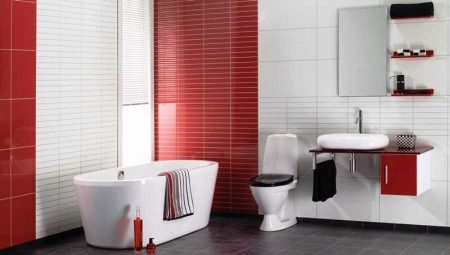To decorate the bathroom, panels are often used - plain or decorated with prints and patterns. Especially popular cladding that mimic expensive materials. Tile panels are in great demand. Let's get to know more about these popular materials for bathroom lining.
Primary requirements
Panels manufactured for wall decoration in the bathroom must meet certain requirements. This applies not only to their design, but also to the degree of practicality, durability and reliability.
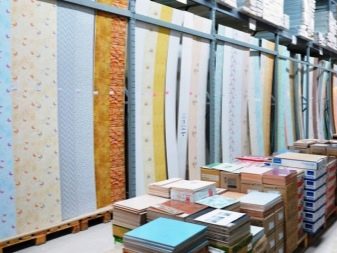
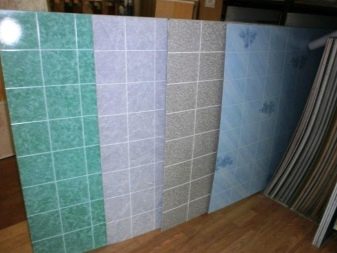
Let us consider in detail what basic requirements are presented to panels for tiles for finishing a bathroom.
- Materials must be resistant to moisture. Wall decorations in the bathroom will be regularly exposed to moisture. Excess moisture should not lead to swelling and soaking of the panels. Otherwise, they will last only a short time and will soon lose their visual appeal.
- Panels should not be afraid of temperature changes. The front side of the considered finishing materials will experience temperature changes on a regular basis. If the panels are not designed for such loads, soon they will inevitably begin to deform.
- Hygiene indicators are also important. The walls in the bathroom come into direct contact with households when they take bath procedures. The health of users will depend on the ability to maintain clean finishes.
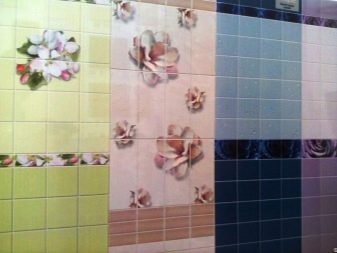

If the wall panels are of high quality, they will withstand repeated cleaning. For these materials it is possible to use regular washing procedures even with the use of special tools. The panels should not contain hazardous chemical compounds that can be released under the influence of high temperatures. The latter can cause poisoning, and on health in general they have a negative effect.
If the finishing material meets all of the above requirements, it will last a long time, it will look attractive and will not harm the health of households.
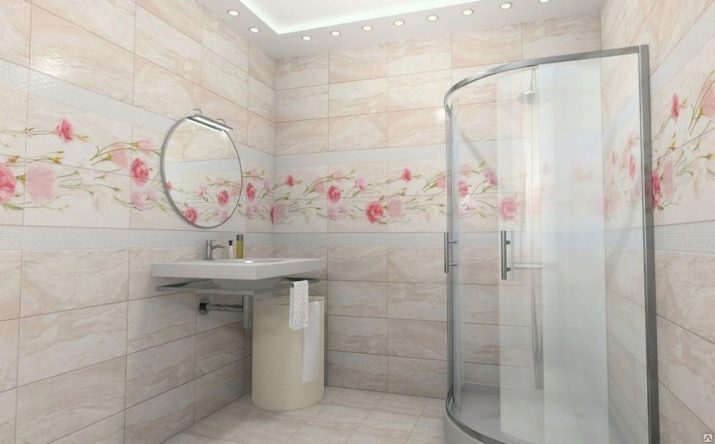
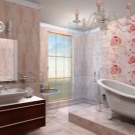
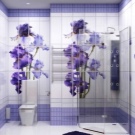
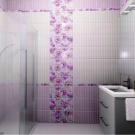
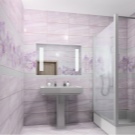
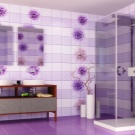
Advantages and disadvantages
In building materials stores you can find a huge assortment of wall panels for tiles. They have a different basis. Can buy polyvinyl chloride, plastic options. Such products have their positive and negative qualities, which should be considered if you decide to turn to a similar wall cladding.
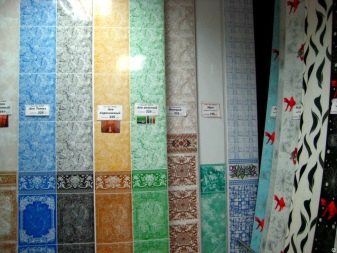

Panels for tiles have several advantages.
- Not afraid of the effects of negative external factors. They do not absorb moisture in their structure, do not undergo deformation. When water gets on them, these materials do not lose their positive qualities and pristine appearance.
- Hassle-free operation. Modern tile panels are recognized as one of the most convenient and hassle-free to use. They allow you to keep warm, and when water gets on them, they do not become slippery.
- Aesthetic qualities. The panels imitating tiles look stylish and attractive. These materials are presented in a huge assortment. Buyers can find for themselves options with different colors and textures.
- Unpretentiousness in leaving. Wall panels are renowned for their easy cleaning. Their surface does not retain pollution. To provide care for these materials, you do not need to buy expensive special chemicals - any usual means will be appropriate.
- Little weight. The weight of the panels is negligible, especially when compared to ordinary tiles that they simulate. However, materials designed for laying the floor are more difficult than wall options. It is not recommended to glue floor products on the walls or ceiling, since on such substrates they may simply not last long.
- Easy installation. To lay ceramic tiles in the bathroom, they usually hire specialists, and their services cost a round sum.
If we are talking about panels that simulate tiles, then it is quite possible to apply them to the base of the room yourself. At the same time, it is not necessary to have rich experience or special skills - even a beginner home master can easily cope with the work.
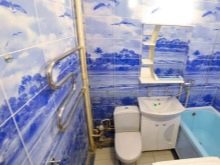
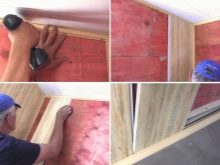

Now we will analyze the shortcomings noted for this material.
- The main disadvantage of many panel models (especially polyvinyl chloride) is their poor resistance to certain chemicals. For example, if acetone is shed on the surface of such a finish, then after it there will be a noticeable trace, which will not be repaired in the future.
- Another weakness of this finish is not the highest level of environmental friendliness. This disadvantage is especially noticeable when comparing panels with natural materials.
- No matter how well the tiles imitate tile, they will in any case be inferior to it in their external qualities. Despite the chic assortment, it can be difficult to find the best option that looks really expensive and stylish.
- The panels under tiles cannot boast of high impact resistance. Such materials can withstand minor loads, but hardly more serious ones. Mechanical damage to the panels remains very easy, and getting rid of them in the future is impossible.
- Some users notice that during the first days from this finish comes an unpleasant, specific smell. This drawback primarily relates to coatings of not the highest quality.
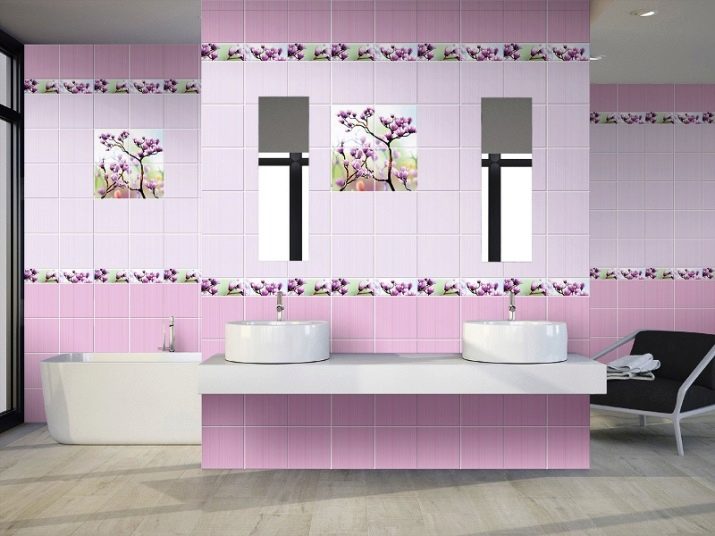
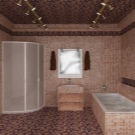
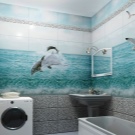
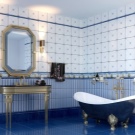

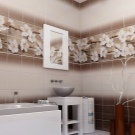
Varieties
Panels that mimic tiles are different.For example, the most popular polyvinyl chloride models are divided into several types having different forms and stability class.
In the form of PVC panels are divided into two main options.
- Leafy. PVC sheets are easy to install. They are installed on the base with adhesive. Visually, they are very similar to plywood.
- Square details. These materials have a clear, strict form. The design here can be diverse. The layout is carried out with alternating different shades or create an original drawing.
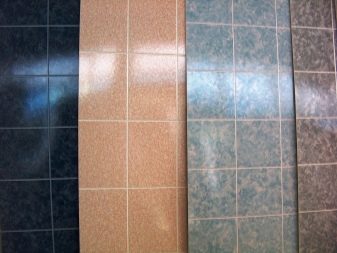
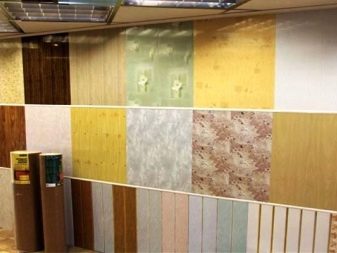
PVC tile, in turn, may vary depending on the type of fastening provided.
- With lock type connection. Such materials are installed thanks to the tongue-and-groove connections. Before installing such products, you have to resort to preparatory work.
- Popular options are those that are attached to the bases on adhesive structures. Here, a special glue is used, which is applied to the back surface of the panels, after which they are pressed to the base and rolled with a roller.
- A large assortment of self-adhesive panels / tiles. One side is sticky and covered with a paper layer. To lay these materials do not need to purchase additional funds or adhesive solutions. It is enough to remove a layer of paper from the part and apply it to the base. In most cases, these options are addressed if you need to bring interesting decorative elements to your decor.
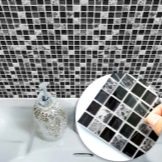
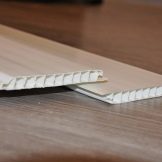
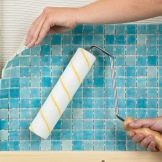
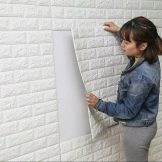
Panels for decorating the bathroom vary in their design. On sale you can find models for tiles, having a variety of colors and shades. It is possible to choose both light and dark, as matte, and glossy options - there are a lot of solutions.
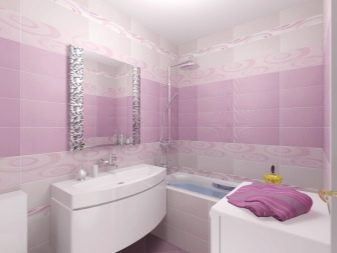
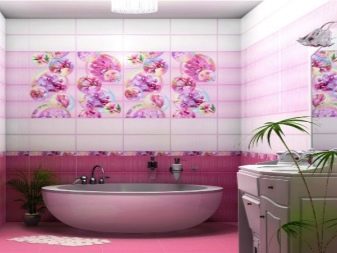

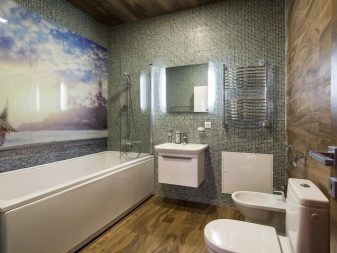
Materials
Panels for bathroom tiles usually have polyvinyl chloride as their base. Modern plastic products are in great demand, since this material has all the necessary characteristics to be in the bathroom.
Plastic panels are distinguished by such operational parameters:
- they are characterized by resistance to the harmful effects of moisture and moisture;
- hide flaws, swings and bumps on the walls;
- do not require complicated care;
- are relatively inexpensive;
- presented in a wide range.
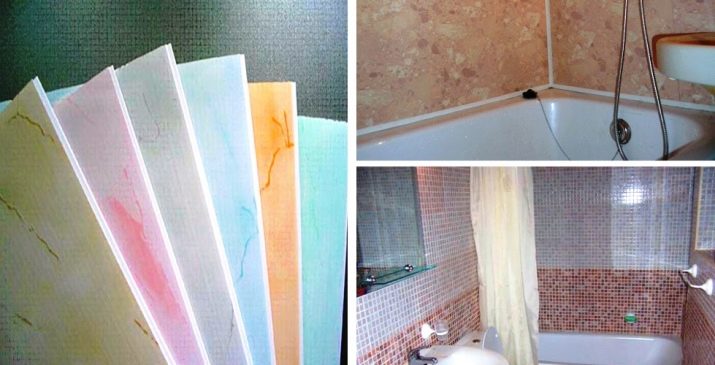
Choosing plastic panels that mimic tiles, it is important to remember that they contain chemical components that make them non-environmental. In this regard, such materials cannot compete with real ceramic tiles that do not contain hazardous substances.
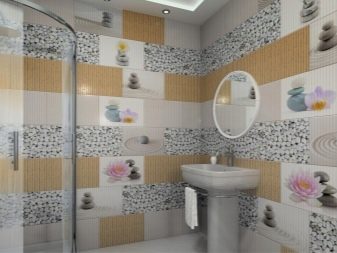
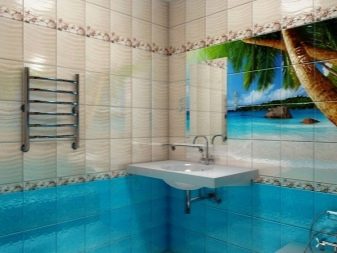
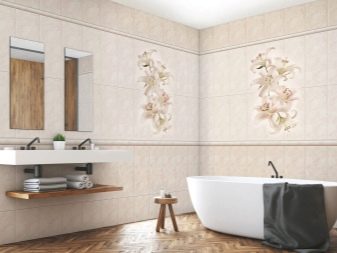
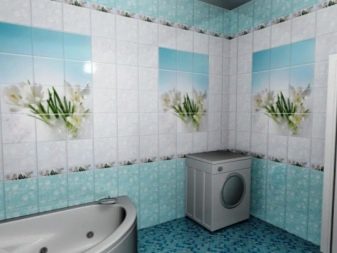
If PVC panels do not differ in high quality, they will not withstand temperature extremes, therefore It is important to select only high-quality specimens. It must be remembered that the level of strength of these products leaves much to be desired - they can be easily damaged.
Panels for tiles are made not only of polyvinyl chloride, but also from other materials, for example, MDF or natural wood. Such a finish is more expensive and also has its pros and cons in comparison with PVC coatings.

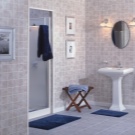
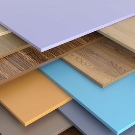
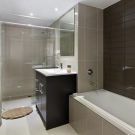
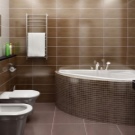
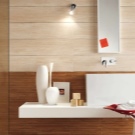
Design options
There are many options for decorating a bathroom with tiled PVC panels.
- The interiors, where color combinations of such finishes are provided, look very beautiful and modern. It can be black and white or black and red plastic coatings with a glossy surface. Of course, other colors are also acceptable - it all depends on the style and the whole situation as a whole.
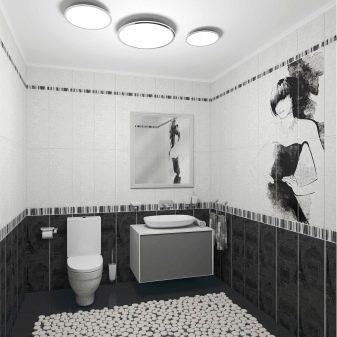
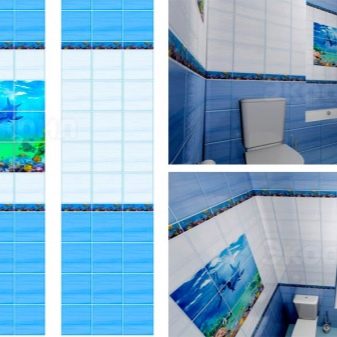
- The panels with different images will look spectacular in the bathroom. It can be flowers, dolphins, tropical motifs, ships and other suitable options. Patterns can only be present in certain areas, diluting the uniform finish.
There can be many prints, but it is better to choose panels with images in soothing colors, otherwise they will oversaturate the interior.
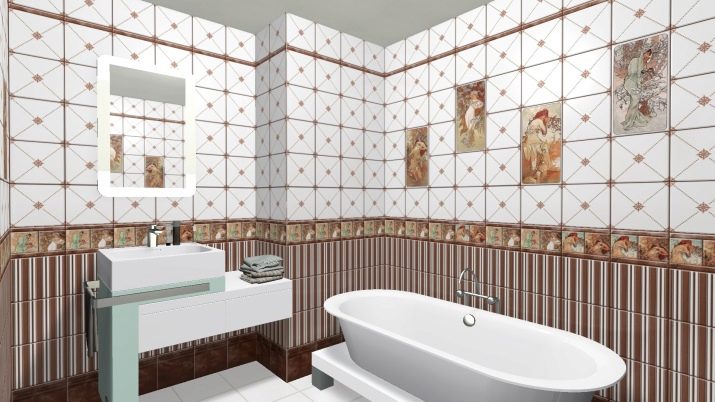
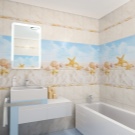
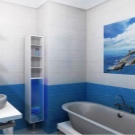
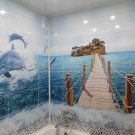
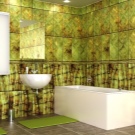
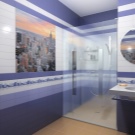
- A win-win solution - plain panels.They can be combined with coatings that differ by a couple of tones without adding patterns.
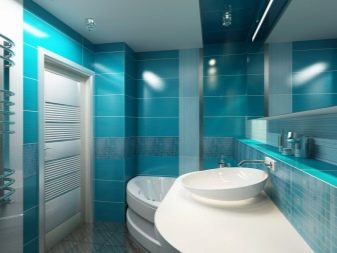
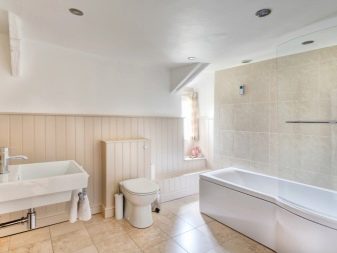
- An interesting design detail is PVC mosaic. It can be made in different colors. It can be used to decorate the entire bathroom, and only certain of its surfaces, making a kind of emphasis.


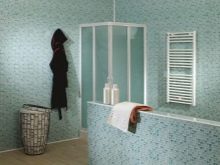
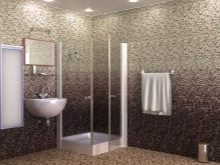
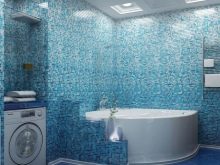
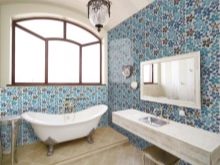
- Seamless PVC panels look harmonious, complemented by a suitable border for decoration and design.
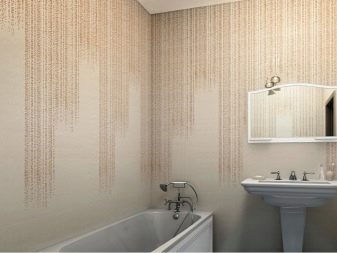
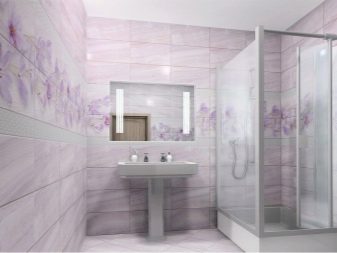
Criterias of choice
Choosing panels for tiles for walls or floors, it is necessary to build on a number of basic criteria. Get acquainted with them.
- The quality of the material. If you plan to buy popular polyvinyl chloride copies, you should not save on them. Such a finish is already inexpensive, and too cheap options can be even more toxic and harmful, and they will not last long. The material should not have a pale yellowish tone.
- Volume / quantity. You should calculate in advance how much material you need. It is advisable to buy PVC panels with a small margin in case of unforeseen circumstances.
- Base. It should be remembered that for walls you need to buy wall panels, and for the floor - floor. These materials should not be confused, since PVC floor panels are heavier and are not designed for installation on walls or ceilings - from there they can simply fall.
- Design. The range of panels for tiles is simply huge. You can choose the right product for any environment. It is necessary to decide in advance in which tones the bathroom will be sustained and in what style it is executed in order to stay at the best option.
- Manufacturer. You should buy only branded plastic panels for finishing the bathroom. So, Tarkett, Forbo, Rinotail firms have a good reputation.
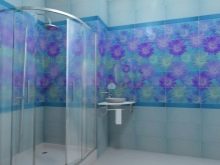
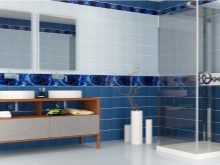

Styling tips
Let's look at a few recommendations for laying plastic panels in the bathroom.
- Most often, PVC panels are installed on a crate prepared in advance. The frame can be made of a metal profile, plastic or wood blocks. If a tree is chosen, it must be smeared with antiseptics.
- Lathing strips are usually fixed perpendicular to the direction in which the panels themselves are located.
- Finishing on the frame should start from one of the corners of the room or from the door leaf. First put the starting corner. They attach it to either nails or special brackets.
- Panels on the frame are placed back to back, continuing to do so until the next corner.
- At the end of the work, the finish corner is fixed. Joints should always be treated with sealant.
- You can attach panels to special clips. To do this, you also need to make a frame. Here, too, they begin to act from a corner or space from the door. So, they put the inner corner, and then put the first plate in profile.
- If the bathroom is small, you need to choose a frameless installation method. If the surface of the walls are uneven, first they need to be leveled, and then glue the finishing materials on them. Adhesive mixture must be special. Simple options will not work, as they have solvents.
- For pasting, the base must be dried; a heat gun can be used.
- Glue is applied to the panels themselves, indenting from the edges, then they are pressed to the base and held for 5 minutes.
- Parts for the floor or ceiling must be attached with dowels and supplemented with skirting boards.
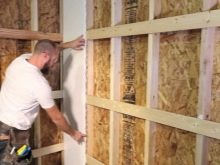
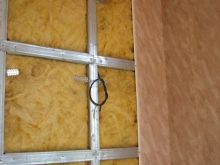
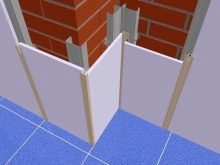
How to care for panels?
Tile PVC coatings must be properly looked after. There is nothing complicated here. Even if contaminants appear on the surface, they can be disposed of as soon as possible.
The surface of plastic panels is easily washed without unnecessary effort. Any stains or traces can be removed literally in an instant using an ordinary wet towel or sponge. The latter is preferably wetted in a soapy solution.
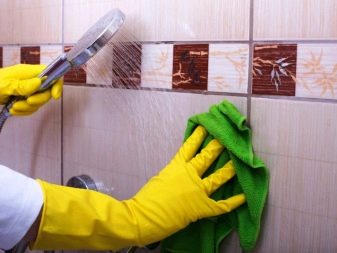
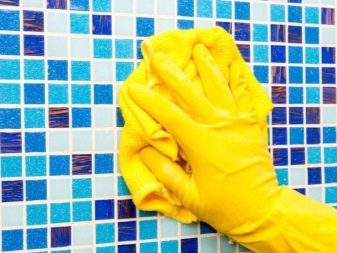
Removing dirty stains from PVC panels, cleaning agents that contain abrasive materials are allowed. If in the future it is planned to install a variety of plumbing accessories - fixtures, hooks or dryers, then in plastic you can always easily drill the holes necessary for that.
Do not wash PVC panels with solvent-containing agents - they will adversely affect the appearance of the materials.
On how to choose a panel for a bathroom, see the next video.
